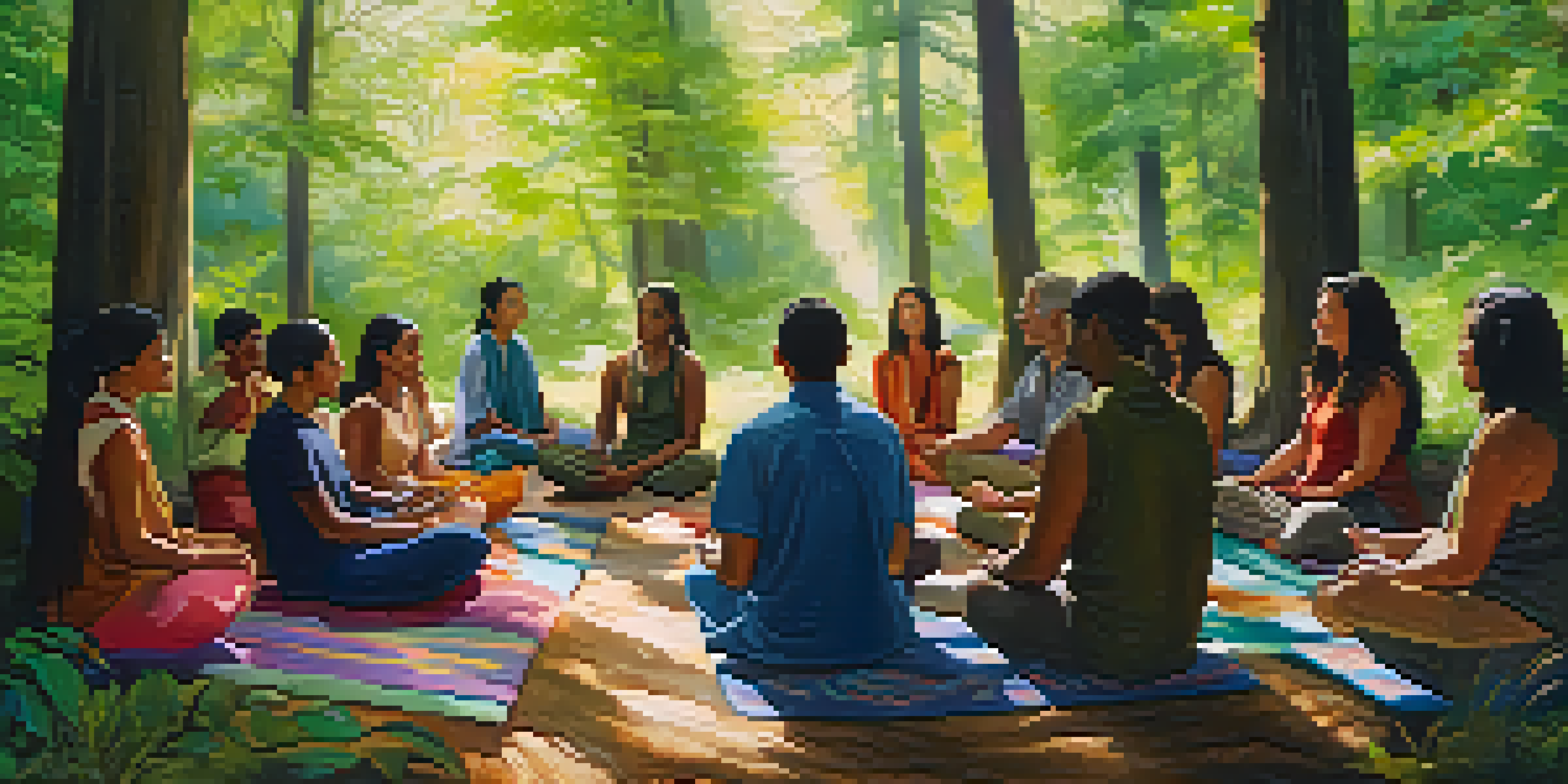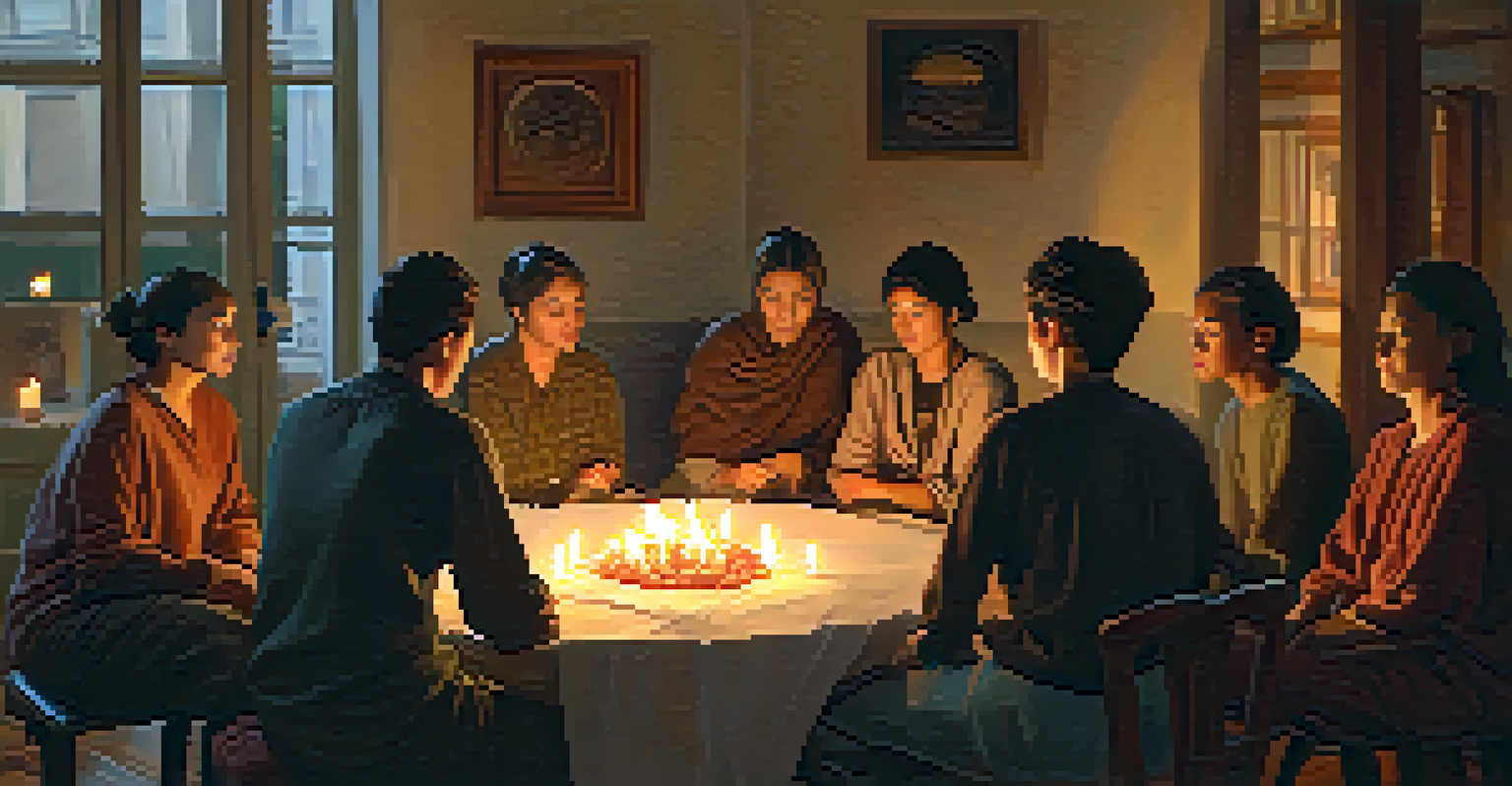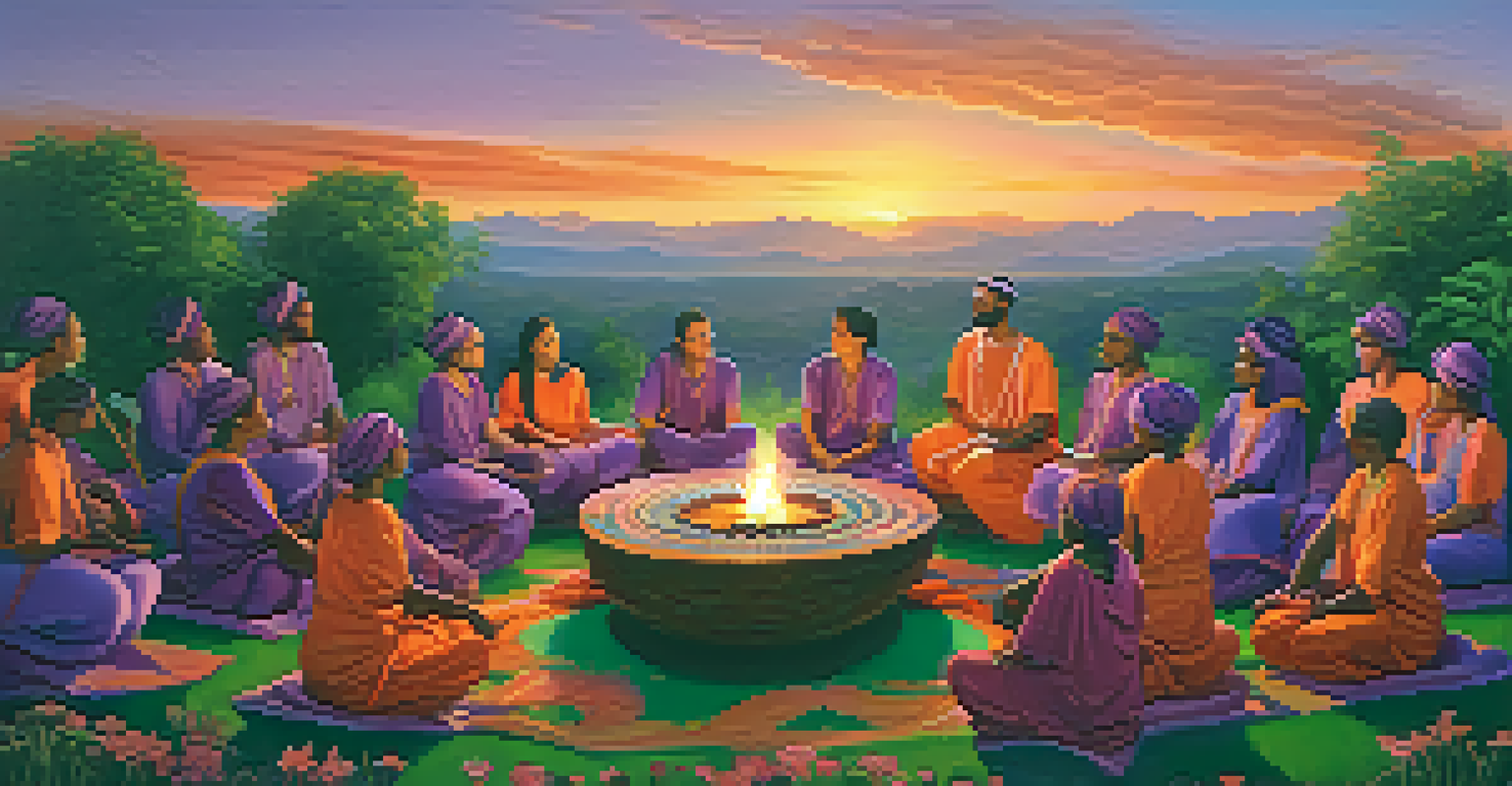Cultural Significance of Community in Entheogen Healing

Understanding Entheogens and Their Healing Properties
Entheogens are natural substances, often derived from plants, that induce altered states of consciousness. Many cultures have utilized these substances for centuries in spiritual and healing practices. The term 'entheogen' itself means 'generating the divine within,' highlighting the profound connection between these substances and spiritual experiences.
The wound is the place where the Light enters you.
The therapeutic potential of entheogens, such as psilocybin mushrooms or ayahuasca, has gained attention in modern medicine. Studies have shown they can help treat various mental health issues, including depression and PTSD. However, the healing process is often enhanced when these substances are used within a supportive community setting.
When people come together to experience entheogens, they create a shared space that fosters connection and understanding. This communal aspect can amplify the healing effects, as participants feel supported and less isolated during their journeys.
Historical Context of Community in Entheogenic Practices
Throughout history, many indigenous cultures have integrated entheogens into their communal rituals. For instance, the Mazatec people in Mexico have used psilocybin mushrooms in ceremonies that bring the community together for healing and guidance. These rituals often emphasize collective experiences, reinforcing bonds among participants.

Similarly, in the Amazon, ayahuasca ceremonies led by shamans play a pivotal role in community health. These gatherings not only serve as healing occasions but also as opportunities for cultural storytelling and shared wisdom. By participating, individuals reinforce their cultural identity while addressing personal and communal issues.
Entheogens Foster Community Healing
Entheogens can enhance healing when experienced in supportive community settings, amplifying connection and understanding among participants.
These historical practices illustrate that community is not just a backdrop for entheogenic experiences; it's a vital component that enhances the overall impact. The shared intention and collective energy of a group can facilitate deeper insights and transformative experiences.
The Role of Community in Modern Entheogen Healing
In contemporary settings, the resurgence of interest in entheogen healing has also brought about new community dynamics. Support groups, retreats, and workshops are now commonplace, offering a structured environment for individuals seeking healing. These spaces often emphasize the importance of community support in navigating the often-challenging journeys entheogens can facilitate.
Healing takes courage, and we all have courage, even if we have to dig a little to find it.
The presence of a community during entheogenic experiences can mitigate feelings of fear or anxiety. When individuals know they are surrounded by others who are equally invested in the process, they may feel more secure and open. This sense of safety allows for deeper exploration of personal issues and traumas.
Moreover, community members often share their experiences and insights, enriching the healing process for everyone involved. This exchange of stories can create a tapestry of understanding that benefits all participants, fostering empathy and collective growth.
The Importance of Shared Rituals in Healing
Rituals play a crucial role in enhancing the communal experience during entheogenic healing. Shared rituals, whether they involve music, dance, or guided meditation, help to create a sacred space for participants. These activities foster a sense of belonging and purpose, which can amplify the healing effects of the entheogens.
For example, group singing or drumming can raise the collective energy and promote feelings of unity. When individuals engage in these shared practices, they often experience a sense of transcendence that deepens their connection to both themselves and each other. This can be particularly healing for those who may feel isolated in their daily lives.
Shared Rituals Enhance Healing Impact
Participating in shared rituals, like music or meditation, creates a sacred environment that deepens connections and amplifies the healing effects of entheogens.
Ultimately, these rituals not only mark the significance of the experience but also serve as a reminder of the power of community. They reinforce the idea that healing is often a collective journey, wherein everyone contributes to the process.
Healing Through Vulnerability and Trust in Community
Vulnerability is a key aspect of the healing journey, and community provides a safe space for individuals to express their feelings openly. Sharing personal stories and emotions can be daunting, but in a supportive environment, people often find the courage to explore their innermost thoughts. This openness can lead to profound healing as group members witness and validate each other's experiences.
Trust is also essential in these communal settings. When participants feel safe and supported by their peers, they are more likely to engage deeply with the entheogenic process. This trust can be built through shared experiences, group discussions, and mutual respect, creating a foundation for authentic connection.
As individuals reveal their vulnerabilities, they often discover that they are not alone in their struggles. This sense of shared experience can be incredibly healing, reminding participants of their shared humanity and fostering a deeper connection with both themselves and others.
Challenges and Considerations for Community Healing Practices
While community can significantly enhance the healing process, there are also challenges to consider. Not all group dynamics are healthy, and issues such as power imbalances or unresolved conflicts can arise. It’s essential to establish guidelines and ensure that all participants feel safe and respected throughout the process.
Furthermore, the diversity of experiences and backgrounds in a group can lead to misunderstandings or discomfort. Facilitators play a crucial role in navigating these challenges, ensuring that everyone’s voice is heard and that the space remains inclusive. This requires skill, sensitivity, and a deep understanding of group dynamics.
Vulnerability Builds Trust in Groups
A supportive community allows individuals to be vulnerable, fostering trust and deeper connections that lead to profound healing experiences.
By addressing these challenges, communities can foster a more supportive and healing environment. Open communication and ongoing reflection can help create a space where everyone feels valued and able to contribute to the collective healing journey.
Future Directions for Community-Based Entheogen Healing
As interest in entheogen healing continues to grow, so too does the potential for innovative community-based practices. Future directions may include the integration of technology, such as virtual reality, to enhance shared experiences. This could open up new avenues for connection and healing, especially for those who may not have access to traditional community settings.
Additionally, there is a growing recognition of the importance of aftercare and ongoing community support. Establishing networks that provide continued connection and resources can help individuals integrate their experiences into their daily lives. This ongoing support is crucial for sustained healing and personal growth.

Ultimately, the future of entheogen healing lies in the hands of the communities that embrace it. By prioritizing connection, support, and shared experiences, these communities can continue to evolve and create meaningful healing journeys for all participants.